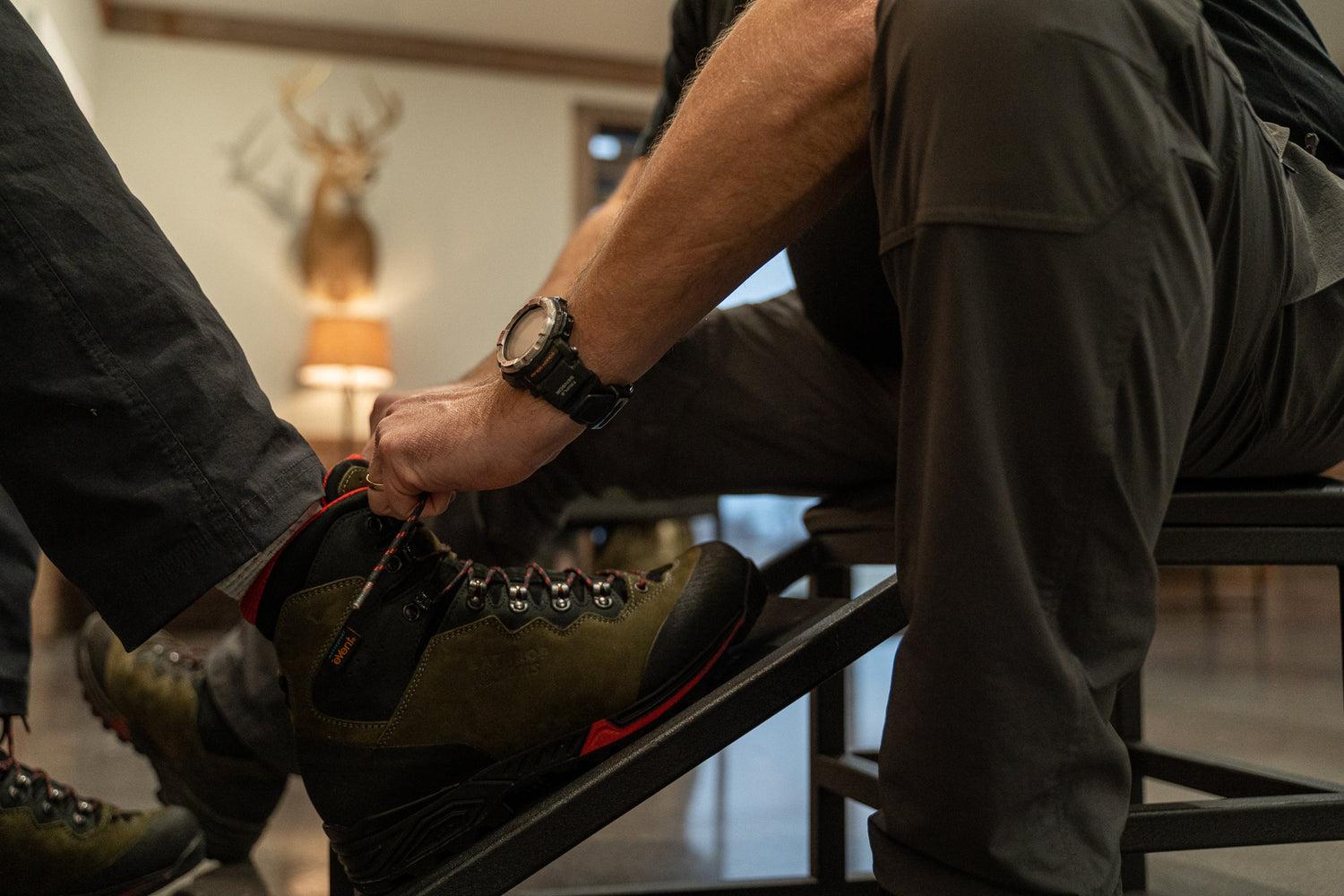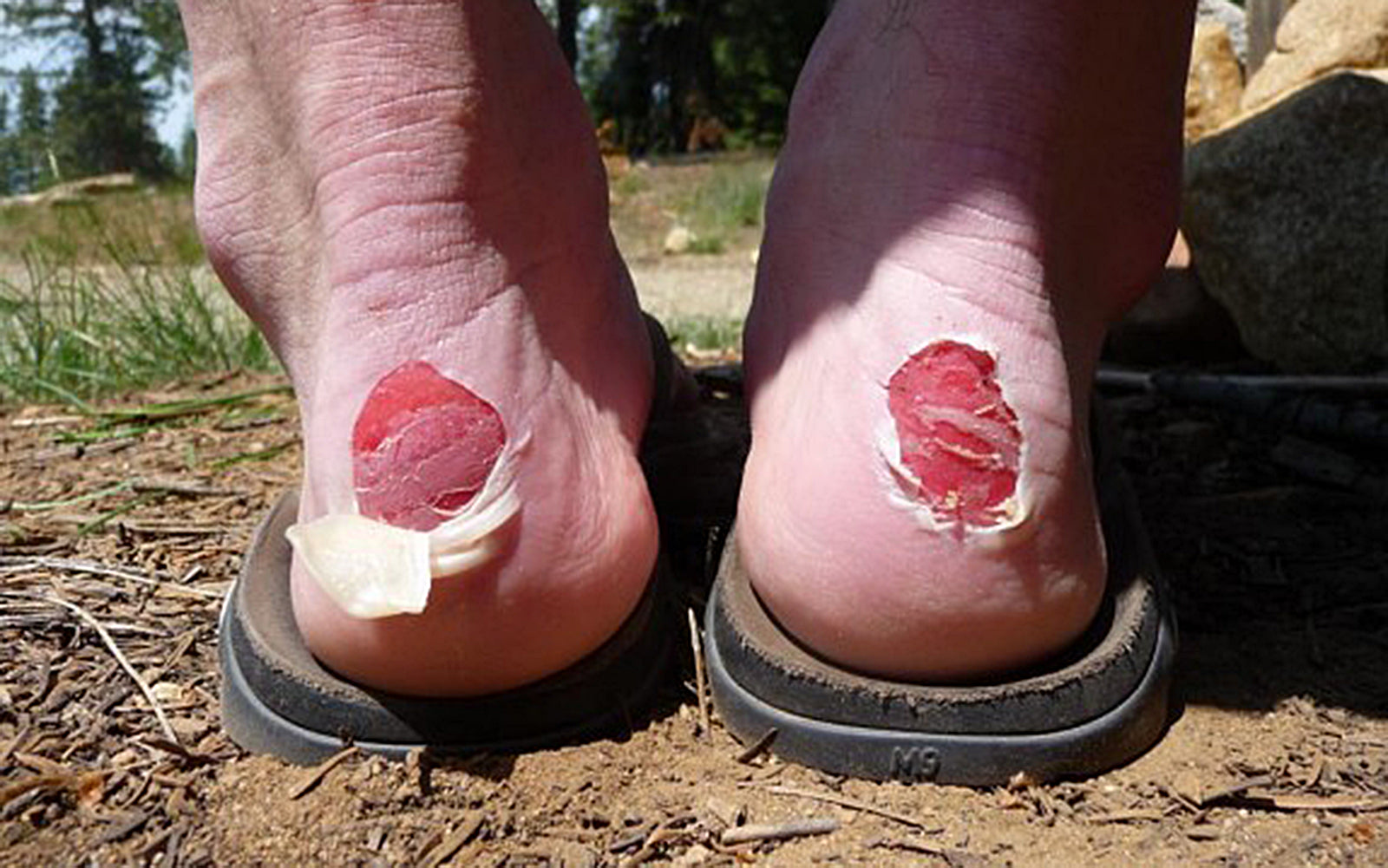Opaque feathers of steam rose lethargically from my Jetboil, as though they felt the same way I did rising from my damp sleeping bag. Unzipping the tent, the green and grey, lichen covered peaks of Alaska’s incomprehensible Brooks Range disappeared into a low cloud ceiling, the same peaks that had vanished 11 days earlier, right after we’d been dumped out of a Super Cub.
Calorie deficient, completely sodden and thoroughly worn out from harvesting two caribou, two grizzly bears and a Dall ram, every member of our hunting party was feeling the abuse; the abuse your body can only sustain when driven by alternating waves of adrenaline and endorphins for days at a time.
We’d packed out five animals, either across spongy muskeg or the steep, rotten shale that northern Alaska is notorious for. We’d covered roughly 110 miles in our boots thus far, but there was still one caribou tag to fill.
Waking up wasn’t something any of us relished. I ignored my screaming shoulders and raw, bleeding hips while donning a cold, wet pack. I stuffed my hair, wet with nearly two weeks of oil, under a hat. After a half mile, my aching quads went numb. Same for my calves. But what I couldn’t ignore, and what didn’t fade, was the pain from the missing skin on my heels and blisters on my big toes. Almost as bad was the bruising on the balls of my feet.
I’d logged countless miles in my boots before the hunt in order to condition my feet. At home, the boots hadn’t felt right, but they weren’t horrible. I wasn’t about to swap them for a new pair before the hunt. When confronted with incessant damp, extreme weight, and the technical terrain of a sheep hunt, the preparation hadn’t helped, or at least not enough. I simply had the wrong boots.
How do I know? Because I went on the same hunt, in the same place, with the same people the very next year without issue. So what changed? My hunting boots.
The second year, everything hurt except my feet, ankles and knees. I’d found the right boots in a pair of Lathrop & Sons Mountain Hunters and a pair of their Synergy footbeds.
It’s often said that finding the best mountain hunting boots is very foot-specific. That is, what works for you might not work for me, and vice versa, simply because our feet are all very different. That’s true to a point.
Quality, however, isn’t foot specific.
Finding the right fit is critical, but in my opinion, that’s the second step. The quality of the boot is where you need to start when boot shopping. Narrow your list of boots first to premium quality manufacturers. No sense in having a trash boot that fits nicely.
I’ve written about boot quality before – and almost without fail, the best boots come out of northern Italy. That’s because the Dolomites are the birthplace of mountaineering, and ultimately the mountaineering industry. In 1954, Achille Compagnoni and Lino Lacedelli were the first humans (and likely the first living creatures) to reach the summit of K2. Those names sound a bit Italian, don’t they? K2 remains the deadliest peak to this day, making a jaunt up Everest look like a cakewalk in comparison.
The Italians have been making world class boots to conquer the highest peaks in the world for generations. Where are Lathrop & Son’s boots made? Northern Italy.
Whether or not you decide to lace up a pair of Lathrop’s, you’re at least aware now that the highest quality mountain boots hail from Italy. That should narrow the field. So what about fit? The best boots in the world serve no purpose if they don’t fit correctly.
Getting the correct size boot is obvious, and relatively easy, especially as a guy (there are simply more hunting boots for men than there for women). However, the width, shape of the heel cup, amount of arch support, density of the footbed, the profile and shape of the last and stiffness of the sole are really what determine fit and feel of the boot. There are two ways to determine what’s best for you.
You could waste a colossal amount of time and money trying boots on. But let’s face it, there’s not a store in the world where you can compare them all side by side. If you go this route, your best option might be to hit a convention like Sheep Show in Reno. Or you can order half a dozen boots and send them back if they don’t work. It’s not a fun process
Want to save yourself the grief? Call a specialist and talk to them about your feet, your weight and the planned use for the boots. That’s what I did when I called Stephen and James at Lathrop.
They can discern a great deal about your feet via a phone conversation. They’re second generation foot specialists, after all, and they have tools to further simplify the process, like their foot mapping system. In the interest of time, I won’t dive into those details here.
What I will say is that Lathrop offers five different boot models with five different, somewhat overlapping purposes. Add to that, the company can custom fit boots and create footbeds specific to your foot. I’m not going to say they can perfectly pair any foot in the world with one of their boots, but they’re more likely to do it than any other hunting boot manufacturer.
After you’ve settled on a quality boot and the right fit for you, the third consideration should be the features of the boot. Some of this may be determined by the task you’re looking to tackle in your footwear, but personal preference plays a big role, too.
I like a relatively stiff boot with outstanding ankle support any time I’m in rocky, steep terrain carrying a moderately heavy pack. When I hunt mule deer, elk, or anything in Alaska, I’m wearing Mountain Hunters or Mountain Hunter Elites. If I’m antelope, turkey or whitetail hunting, I opt for the Mountain Hunter Encompass. It’s lighter and more pliable.
In western hunting boots, or sheep hunting boots, I look for the most robust rubber rand I can find. Northwestern Wyoming is loaded with super abrasive volcanic rock that annihilates leather. Colorado and Montana is laced with granite shale slides. Any of the territory south of Utah is host to myriad species of prickly plants that are begging to punch a hole through your expensive boots. A beefy rand cures all these ailments and adds service life to your footwear.
Lace locking systems are a pretty unique feature among mountain boots, but they should be standard. Lace lockers, like those found on Lathrop’s boots, allow you to tighten the laces on your foot, while leaving them a bit looser at and above the ankle. This allows you to keep the bottom half of the boot nice and snug while allowing your ankle to articulate.
The outsole (bottom) of the boot is pretty critical. The rubber has to be soft enough to provide traction while being hard enough to resists rapid wear. Lathrop boots use Vibram outsoles, only the world’s best name in outsoles (surprise, they’re an Italian company, too).
Interestingly enough, the Mountain Hunter Warm and Encompass Boot models feature an outsole with a softer rubber compound. In the case of the Mountain Hunter Warm, a softer compound is used because cold temperature harden rubber and snow requires more grip than dry ground. In the case of the Encompass, the more pliable boot benefits from a more pliable outsole. See, good boot design makes sense.
The footbeds used in a mountain hunting boot also have a massive impact on your overall footwear experience. They’re responsible for reducing friction between your foot and the boot, and they also determine, to a great degree, the amount of impact that will be delivered to your heel and the ball of your foot. But footbeds are a topic in and of themselves, so I’ll leave it at that, for now.
There are so many things that must come together in order to create a great boot, and the perfect boot experience for the mountain hunter. I used to approach the process very casually, and I learned my lesson the hard way. I hope you’re wiser than I was. Happy hunting!



